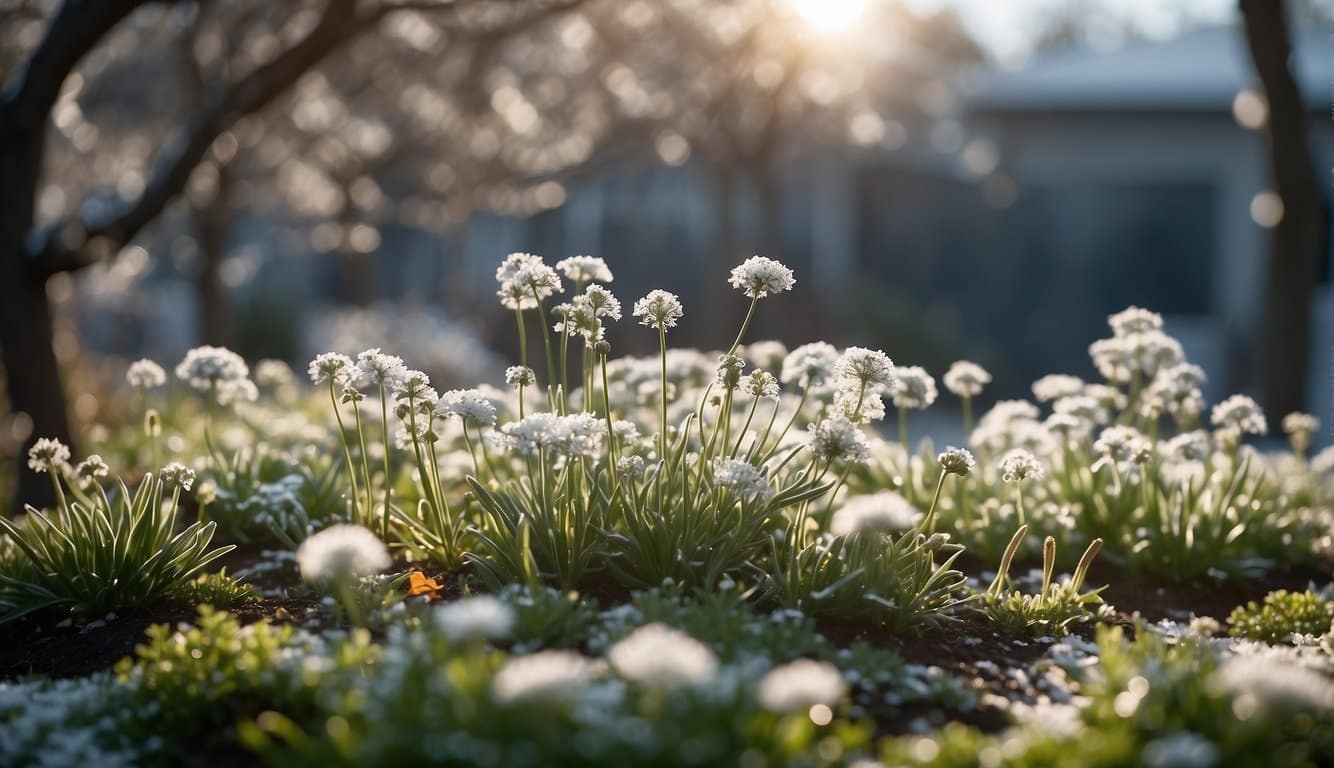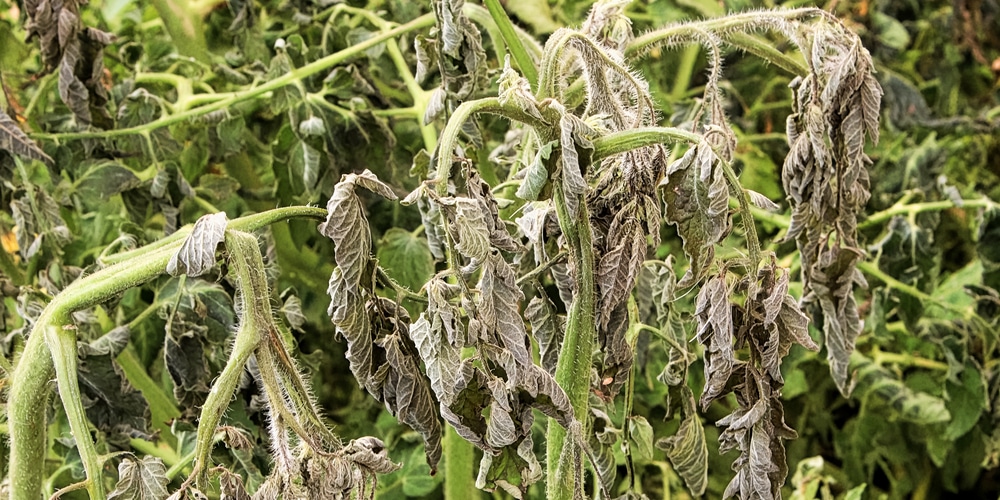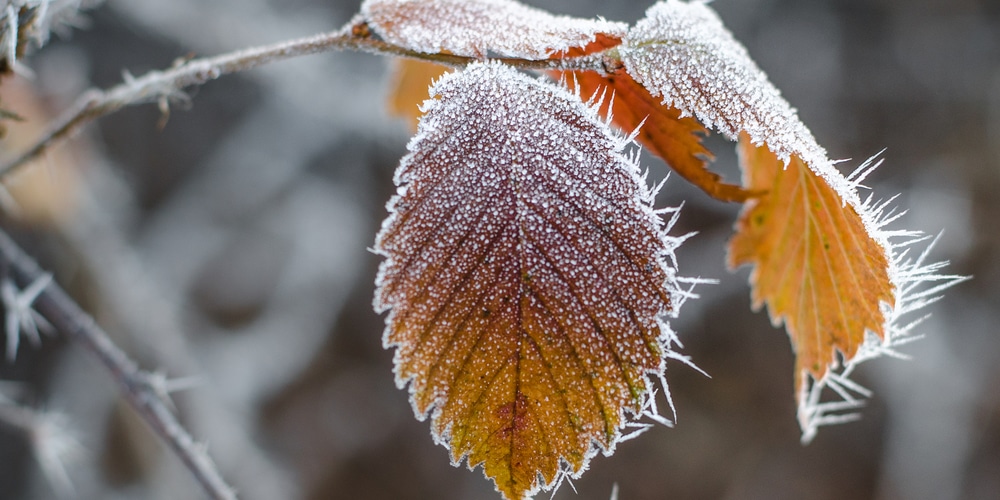Spring Frost Fundamentals

When managing your garden, you’ll encounter Spring frost—a period where temperatures drop to near-freezing levels, leading to the formation of a thin layer of ice on plants. Here’s a concise guide on what you need to know about spring frosts:
- Freezing Point: Most spring frosts occur when temperatures fall between 33-36 degrees Fahrenheit. At these temperatures, the moisture on plant surfaces freezes.
- Plant Effects:
- Tender Plants: These are highly susceptible. Frost can damage new growth, such as buds and leaves.
- Hardy Plants: Some plants can withstand light frosts, but prolonged exposure can still be harmful.
- Frost Types:
- Radiation Frost: Clear skies and calm winds can lead to radiation frost where heat radiates from the ground.
- Advective Frost: Occurs due to cold wind blowing into the area.
- Time of Day: Frosts often occur during the early morning hours just before dawn.
Protection Strategies:
- Water: Moist soil retains heat better, so ensure the ground is moist (but not soaked).
- Coverage: Use fabric covers or inversion pots to shield plants.
- Location: Plant sensitive species in areas less likely to experience severe frost, like near buildings.
For information on how frost forms and affects your garden, read more from expert sources like Horticulture magazine’s article on protecting plants from late frosts.
Preventive Measures for Frost Protection
Frost can be a gardener’s nemesis as it threatens to harm or even kill your plants during those crucial early weeks of spring. Here’s how you can safeguard your garden against those chilly nights.
Site Selection and Microclimate Assessment
- Choose strategically: Selecting the right site for your garden can dramatically reduce the risk of frost damage. Elevated areas with good air flow minimize frost pockets.
- Assess microclimates: Watch for microclimates in your garden, since areas near buildings or trees may be warmer and offer some protection against frost.
Cultivation of Frost-Resistant Varieties
- Opt for hardy plants: Cultivate varieties that are known to withstand cold temperatures, which can often be found in detailed descriptions on seed packets or plant tags.
Implementing Frost Blankets and Row Covers
- Utilize frost barriers: Cover your plants with frost blankets or row covers as they can provide a buffer against the cold and trap warmth from the soil.
- Secure thoroughly: Ensure the edges of your blankets or covers are firmly secured to the ground to prevent cold air from seeping in.
Watering Strategies Prior to Frost
- Hydrate in advance: Moist soil retains heat better than dry soil, so give your plants a good drink prior to an expected frost night.
- Avoid over-watering: While hydration is key, avoid soaking the soil as it could lead to root damage if the water freezes.
Active Frost Management Techniques
When a frost warning looms, being prepared with active management strategies can be the difference between a thriving garden and a frostbitten one. Active techniques are direct actions you can take to mitigate the damaging effects of frost on your plants.
Using Heaters and Heat Lamps
- Positioning: Place heaters or heat lamps strategically around your garden to raise the air temperature during cold nights.
- Considerations: Be mindful of safety, ensuring heaters are suitable for outdoor use and positioned away from flammable material.
Wind Machines and Their Usage
- Operation: Wind machines work by pulling warmer air from above and mixing it with the cold air near the ground to raise the temperature.
- Best Utilization: These machines are most effective in areas with a slight inversion layer and relatively open terrain.
Sprinkler Irrigation for Frost Control
- Timing: Begin sprinkler irrigation early in the night and continue until the thawing is complete in the morning.
- Mechanism: The water creates a protective ice layer, which releases heat as it freezes, keeping the plant at 32°F.
- Conditions: Ensure continuous operation; if the water stops, plants may suffer more damage than if they were unprotected.
Monitoring and Responding to Frost Warnings
Effective garden care in spring includes being proactive about frost warnings. It’s essential to correctly install a weather station, set up alerts, and plan your response to protect your plants.
Weather Station Installation
- Choose a location that represents your garden’s microclimate; avoid placing the station near heat sources or in direct sunlight.
- Ensure the device’s sensors are within your Wi-Fi range for seamless data transmission.
Creating a Frost Alert System
- Subscribe to local weather forecasts for up-to-date information.
- Utilize apps or online services that send custom weather alerts; this can mean the difference between a thriving garden and one that’s frostbitten.
Response Planning for Frost Events
- Prepare supplies: Have materials such as burlap, frost cloths, and blankets ready for use.
- Take action: If you’re alerted to an impending frost, cover vulnerable plants before nightfall and consider watering early in the evening to help retain soil warmth.
Post-Frost Recovery and Assessment
After a frost event, swiftly assessing damage and caring for your plants is crucial. Your prompt response can mean the difference between full recovery and lasting damage to your garden.
Damage Inspection and Documentation
- Examine Each Plant: Look closely at your plants for signs of frost damage such as wilting, discoloration, or limpness.
- Record the Damage: Note the extent of damage on each plant using a scale from mild to severe and take photographs for records. This can help in monitoring the recovery process.
Post-Frost Care for Affected Plants
- Prune judiciously: Remove only the damaged parts of your plants after they’ve resumed growth to avoid stress.
- Hydrate: Water your plants well unless the soil is saturated; frost can dehydrate plants.
- Nutrient Replenishment: Provide a balanced fertilizer to support recovery, but only once the plants show signs of new growth.
Adjusting Future Frost Management Strategies
- Revise Covering Techniques: Reflect on the efficacy of any protective coverings you used and consider investing in higher-quality materials if necessary.
- Adapt Planting Practices: Delay or advance your planting dates based on the frost patterns observed.
- Microclimate Utilization: Rearrange your garden layout to take advantage of warmer spots and sheltered areas.
Frequently Asked Questions
Managing spring frost in your garden requires timely actions and proper techniques to ensure the survival of your plants. Here are the most common queries related to frost management in gardens, answered with precision and clarity.
What measures can be taken to shield plants during a frost advisory?
To protect your plants when a frost advisory is issued, consider several preventive strategies:
- Water the soil around the plants as moist soil retains heat better.
- Use frost cloths or burlap to cover vulnerable plants.
- Place containers with warm water under the covers to add warmth.
How can I safeguard my vegetable garden when temperatures approach freezing?
Ensuring your vegetable garden is safe during cold spells involves:
- Mulching around the plant base to keep the soil warm.
- Setting up structures like cloches for individual plants.
- Applying an extra layer of straw or leaves over the mulch for insulation.
Are there any cost-effective materials that can be used to cover plants against frost?
Yes, affordable and readily available materials for frost protection include:
- Old bed sheets or burlap as a light cover.
- Newspapers or cardboard boxes can also act as a temporary barrier.
- Plastic containers or milk jugs with the bottoms cut out to create mini greenhouses.
Can a simple tarp effectively provide frost protection for garden plants?
A tarp can provide adequate frost protection, but it should be:
- Elevated above the plants to avoid direct contact, which could transfer cold.
- Secured so that wind doesn’t remove the protection.
- Removed during the day to allow sunlight and air circulation.
What types of plants are most in need of protection during a freeze warning?
Plants that are especially vulnerable to freezing temperatures include:
- Tender seedlings and young plants.
- Flowering plants, as blossoms are susceptible to damage.
- Subtropical species not adapted to cold climates.
At which specific temperature threshold is it critical to cover outdoor plants at night?
You should cover outdoor plants at night when temperatures are forecasted to drop to:
- 36 degrees Fahrenheit (2 degrees Celsius) and below for frost-prone areas.
- 32 degrees Fahrenheit (0 degrees Celsius) or lower, as this is the point at which frost typically forms.

